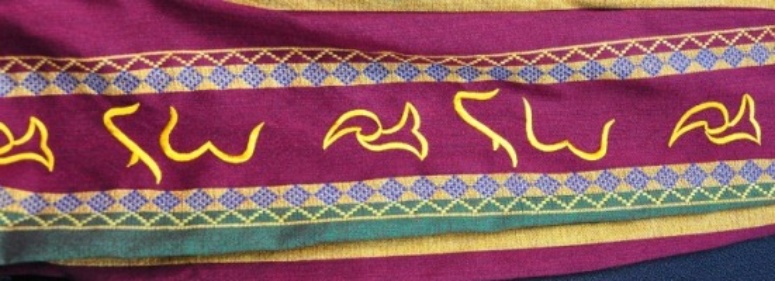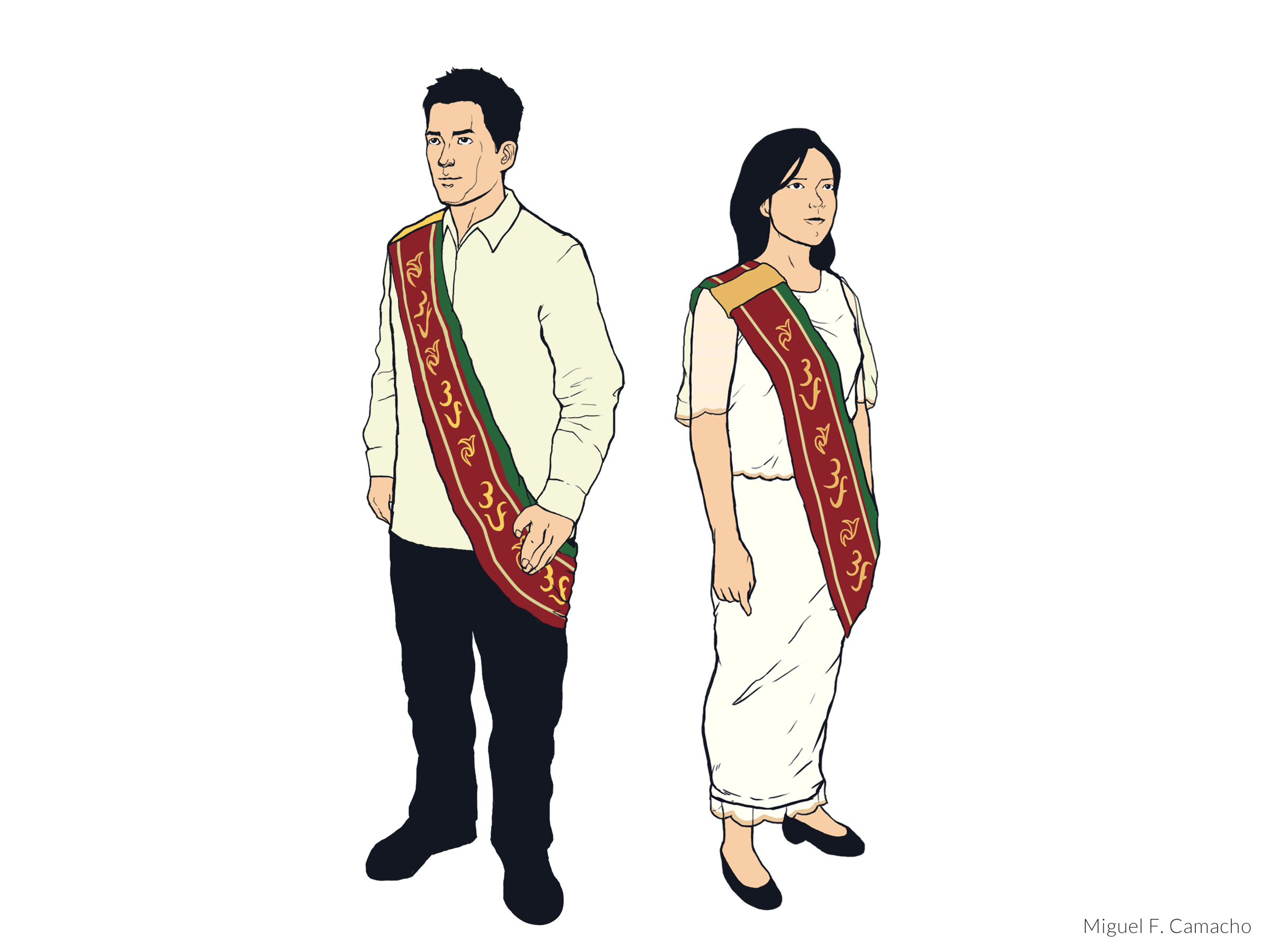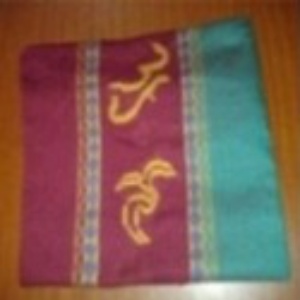Here are some facts about the Sablay donned by University of the Philippines graduates
University of the Philippines students stand out for their graduation attire. Instead of the traditional toga and mortarboard, Iskos and Iskas don the Sablay.
Over 5,000 students from the UP Diliman ended their college journey last July 6, with 2,636 of the 3,876 undergraduates earning Latin honors.
Amid the rain that fell on Saturday morning, the UP grads wore their Filipiniana and Sablay with umbrellas in tow during the commencement exercises at the University Amphitheater.
The Sablay, in particular, is what makes graduates unmistakably from UP, even as they carry a symbol of academic excellence, nationalism, and culture for the rest of their lives.
Here are some facts about the Sablay.
What is the Sablay?
According to Evangeline Amor, chair of the UP Sablay Committee, the word Sablay means to "award or place on the shoulder."
More specifically, the UP Office of the Registrar noted that, as a verb, isablay means "to put a precious object like a piece of cloth or garment upon one's shoulder," as a means of giving value and respect to the same object.
Amor said the Sablay was introduced in UP Diliman in the '90s primarily to adapt to the hot climate.
The university officially adopted it in 2000 to replace the traditional mortarboard and toga and serve as UP's official academic costume, according to the OUR.
What does the Sablay symbolize?
The OUR said the Sablay symbolizes our nationalism and the importance being put upon indigenous culture, which are among the values learned from UP.
What are the Sablay's physical attributes?
The Sablay is adorned with ukkil and geometric elements. The ukkil represents the growth of knowledge, while the geometric patterns—in the form of triangles and chevrons—are common design elements across indigenous cultures in the Philippines.
Amor added that the chevron and diamond patterns represent the country's rice culture in the Philippines. They're arranged continuously and rhythmically to signify the interrelatedness of culture and nature.

The acronym "UP" can also be found on the Sablay. Based on the baybayin for U and P, it has been designed to represent the university's indigenous acronym itself. In other words, it isn't meant to be read in a syllabic way as the corresponding baybayin characters are.
In terms of colors, Amor said the Sablay follows UP's colors of maroon and green. It also utilizes gold and yellow, which symbolize wisdom and excellence.
How is the Sablay made?
Amor said the Sablay should be handwoven together with the baybayin-based characters, which shouldn't be embroidered at all.
She noted that this represents the Philippines’ cultural narratives. Moreover, it also symbolizes the hard work that goes into its production, like earning an academic degree.
Who makes the Sablay?
Easter Weaving Room, a Baguio-based weaving center owned and managed by the Philippine Episcopal Church, makes the Sablay for UP graduates.
According to its website, the EWR was established in 1908 when missionaries trekked the trails of the Cordillera Region and were "charmed with the beauty of the land."
The missionaries then saw the "innate talent" of the Cordillera women when it comes to weaving. They held weaving classes which led to the production of placemats, table napkins, and tablecloths, which became the perfect gifts for the missionary, military, and business friends and families.
Though World War II disrupted things, it didn't deter the EWR's weaving classes and production.
Over the years, it began offering other handicrafts like woodcarvings, rattan and paper baskets or bags, shell and coconut decors, local oil paintings, Ilokano and Yakan Weaving, as well as some local food delicacies.
The EWR began making the Sablay in the late aughts.
In a 2014 interview, EWR General Manager Virginia Doligas said they get over 3,000 orders of the Sablay annually. A weaving center in Visayas makes the rest of the orders.
The Sablay is also available through other shops like Upbeat Merchandise and Arevalo. The special garb from these stores is made by Iloilo weavers.
On what side should you wear the Sablay?

Like the tassel of a mortarboard, the Sablay is moved from the right side to the left side.
The OUR reminded candidates for graduation to first wear the Sablay hanging from their right shoulder, with the band slightly below the shoulder.
It should ultimately be hanging from their left shoulder, symbolizing their transition from being a candidate for graduation to a full-fledged graduate.
Is the Sablay only wearable during commencement exercises?
The OUR noted that the Sablay should only be used during academic functions and activities, such as commencement exercises.
But other events in which it could be worn include recognition programs, investiture of Chancellors and Presidents, awarding of honoris causa, other academic activities requiring the academic costume, and official photo taking.
Otherwise, no other events are eligible for wearing one, as "due respect" should be given to the Sablay.
In May 2023, Filipino American sports journalist Pablo Torre stirred controversy for wearing the Sablay of his father during an awarding ceremony in Los Angeles.
Torre, a non-UP graduate who wore the Sablay over a black suit, explained that he did it to pay tribute to his parents and their fathers, who were all UP alumni.
While some netizens praised him for honoring his family members and, by extension, UP graduates, others criticized him for not observing the university policy on when to wear it.
What should a person wear with the Sablay?
The OUR noted that formal clothing should be worn with the Sablay "as a sign of respect for the official academic costume and to preserve the solemnity and dignity of the occasions when it is worn."
Females must wear a dress that preferably has sleeves. A sleeveless dress must be worn with a shawl or a bolero. The dress must be in ecru, beige, or cream colors, and must be below the knee up to the ankle.
In terms of accessories, females must wear jewelry at a minimum, preferably opting for earrings and a necklace only.
Males, meanwhile, must wear barong in ecru, beige, or cream colors, and a pair of black pants, black socks, and black shoes.
Males and females should not wear the Sablay with a hat.
They, however, may use paraphernalia like college pins and a hood during the college recognition rites—but not during the general commencement exercises, during which only the UP pin is recommended.
The Sablay must also be mid-thigh in length for aesthetic and practical purposes.
How to store the Sablay?

The OUR said the Sablay should be accorded with appropriate handling as befitting of an academic costume.
When not in use, the office recommended folding and packaging the Sablay in a manner that will show the baybayin and ukkil in front.


